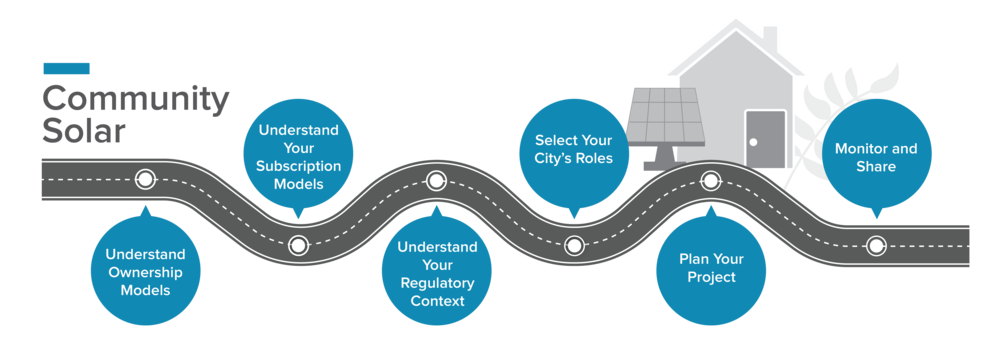
Community solar projects are midsized solar projects (i.e., 1–10 megawatts [MW]) sited within the customer’s utility service territory and connected to the distribution grid. The output of the solar array is divided among multiple subscribers, who receive utility bill credits for their share of the solar array’s energy production. Typically, the utility or a third party develops and maintains the plant on behalf of the subscribers.
Community solar allows consumers to access locally produced solar energy even if they are not able to install on-site solar on their properties (as is the case with renters, people living in multifamily buildings, or those without viable rooftops for hosting solar). Community members can subscribe by purchasing shares of the solar project directly through an up-front or monthly payment. They then receive monthly bill credits for their shares of the project.
For a local government to participate in a community solar project, either its state must have an established community solar policy, or its utility must offer a community solar program. Particularly if the local utility does not already offer community solar, local governments may want to engage their local utility to help create a program that will meet their needs.
While many general guides exist for community solar procurement, this guide is specifically intended for city staff. We hope that by reading through the following steps tailored to your city’s context, you will be able to better understand and plan for community solar procurement.
